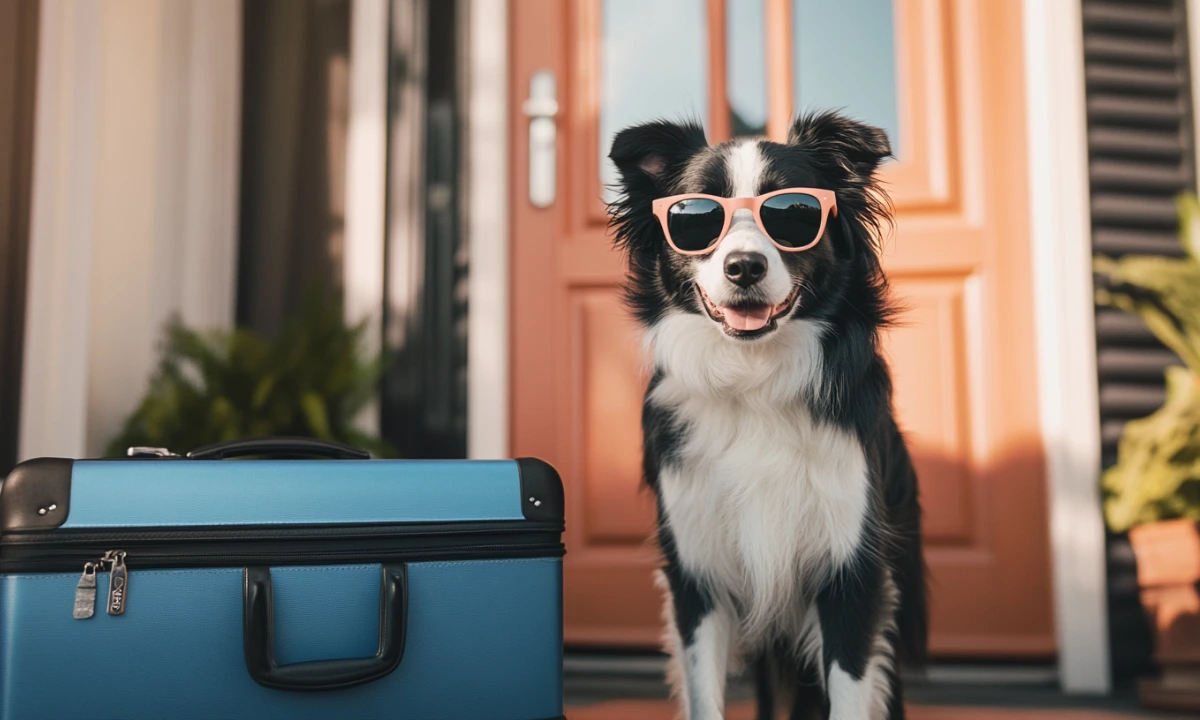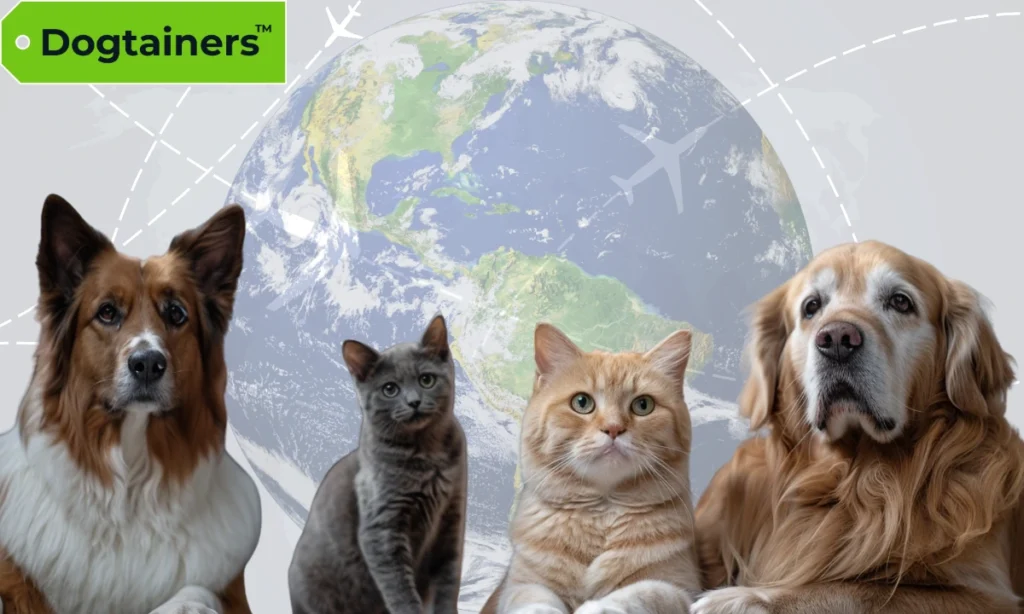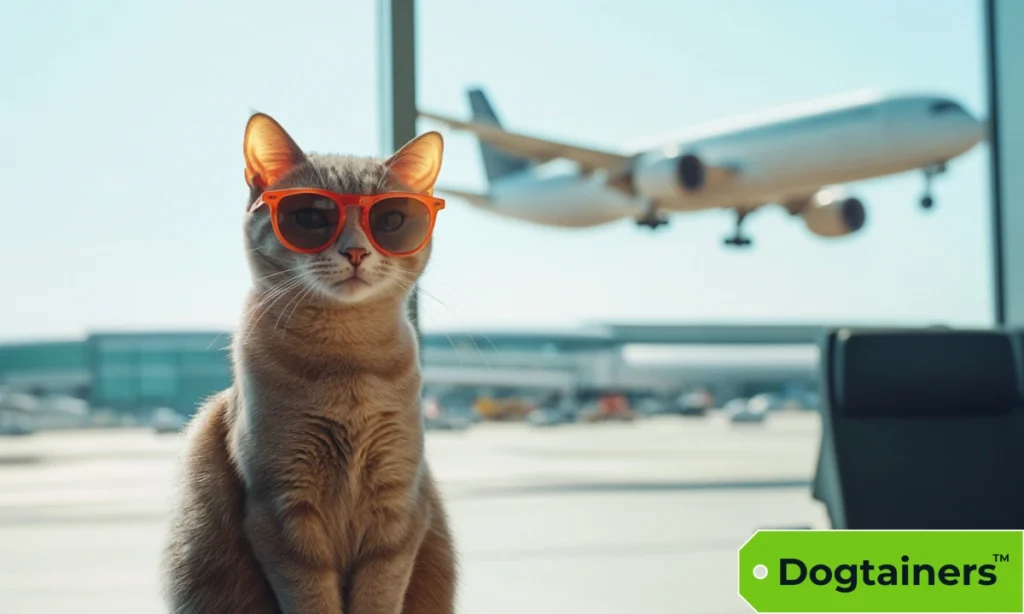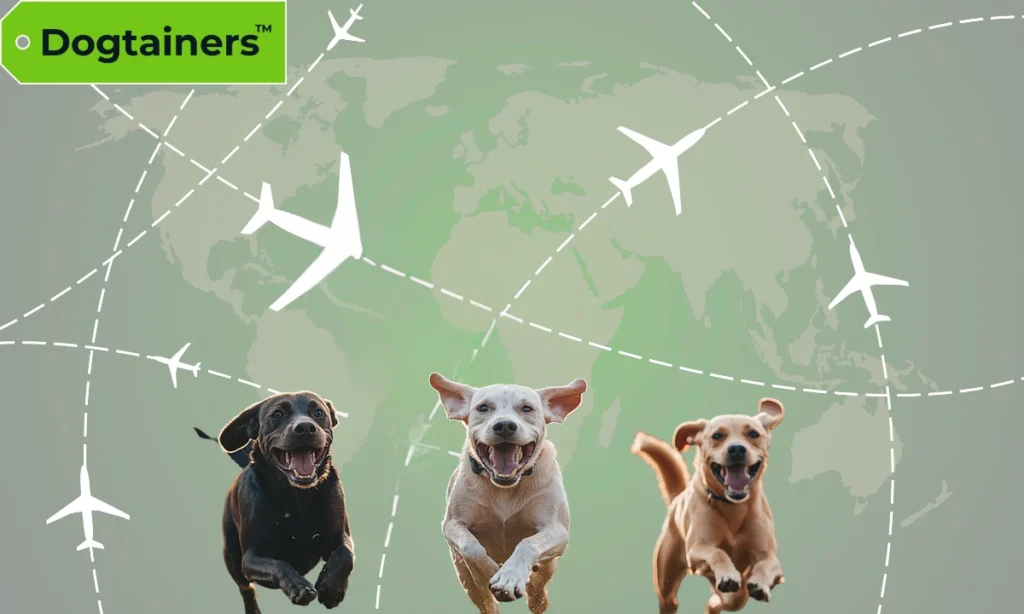1. Myth Debunked: Pet Travel is Dangerous
As you’d expect, we speak with many people about pet transport. And a lot of them think that pet travel is dangerous.
They imagine the cargo hold on the plane as dangerous for pets. But this simply isn’t true.
Your pets travel in:
- The cargo hold – usually at the rear of the plane
- This area is pressurised – just like the one you fly in
- The captain sets the temperature at a comfortable 18ºC
- The hold is dimly lit as well – so your pet will be comfortable
- Your pet has a separate area in the compartment, away from bags
You might think airport staff just throw pets into the cargo hold. This isn’t the case, though.
Every plane has a separate section specifically designed for live animals. Staff handle your pets with care and secure them away from the luggage.
We also strictly follow the protocols laid out by IATA in the Live Animals Regulations manual. As a proud IPATA member, we’re dedicated to safe pet travel.
Road transport is safe for your pets as well. They travel in a temperature-controlled van with frequent rest stops for stretching their legs, getting fresh air and doing their business.
This greatly benefits your pet. Because someone is with them the entire journey.
2. Myth Debunked: All Countries Have Mandatory Quarantine for Importing Pets
Quarantine is something to consider when importing pets to other countries. But not all countries have mandatory quarantine.
Pet quarantine is about minimising the risk of introducing diseases into the destination country. Enforcing quarantine keeps local animals and plant life safe from pests and diseases.
Countries set their own quarantine protocols. So, some countries have stricter regulations than others.
The risk of rabies plays a vital role in mandatory quarantine. For instance, Australia is a rabies-free country.
So, we have strict rules and regulations around importing pets from other countries. These protect our local populations from dangerous diseases like rabies.
The Department of Agriculture, Fisheries, and Forestry places countries into groups. This determines the protocols around mandatory quarantine.
Say you’re travelling to Australia with your pet from a country in Group Three. Your pet must undergo mandatory quarantine at the Mickleham facility in Melbourne before travelling to their final destination.
The length of quarantine varies depending on the departure country. But it’s a minimum of 10 days and can extend to 30 days.
3. Myth Debunked: You Can Send Toys With Pets
Some airlines have a strict no-toys policy. Assuming you can send toys with pets is incorrect.
We advise against sending any toys with your pet when flying. There’s very little room inside the travel crate for any toys, even if the airline does allow it.
Hard toys could also present a safety risk to your pet during the flight. Leaving any toys at home is the safer option.
We recommend sending a blanket or old T-shirt with your scent. This can help relieve any anxiety for your pet.
Note: These items will be destroyed when you bring pets into Australia.
4. Myth Debunked: Vet Visits Are Only Necessary for Vaccinations
Visiting your vet is important when travelling with pets, especially for international travel. You must follow all the pet import regulations to enter the destination country.
Most countries have mandatory core vaccines like rabies as part of the entry protocol. An approved vet must administer and record these vaccinations if you’re entering Australia with your pet.
But vaccinations aren’t the only reason to visit a vet for international pet travel. Your pet needs a health certificate, a microchip and external and internal parasite treatments before travelling.
An approved vet can help you with all these requirements.
Health checks generally aren’t mandatory for domestic pet travel. But pets aged 8-12 weeks, over 12 years, and snub-nosed breeds like French Bulldogs must get a vet check.
We advise getting a pre-travel health check, even if it isn’t mandatory. This ensures your pet can travel safely and gives you peace of mind.
5. Myth Debunked: Travel is Stressful for Pets
Some pets do get stressed when travelling, while others are pretty chilled out. But most of the stress we see in pets comes from the owners.
Our pets are exceptionally attuned to our emotions. They’re experts at picking up on emotional cues, including stress.
Stay calm and positive on travel day. This helps to keep your pet at ease.
Of course, that’s easier said than done. We know that transporting your beloved pet can be a stressful process.
With over 50 years of experience, we are pet travel experts. Our professional handlers are trained to stay calm during departure, which helps with your pet’s stress before flying.
6. Myth Debunked: All Airlines Have the Same Pet Policies
Not all airlines have the same pet policies – some aren’t even pet-friendly. Others, while pet-friendly, can only carry pets on certain aircraft and only with certain cargo.
Those that are can have varying policies. These can change depending on the destination country.
Some airlines may have a strict no-toys policy. Others may allow small toys in the crate with your pet – although we generally advise against sending any toys.
Some airlines aren’t pet-friendly and don’t accept pets on the plane, even in the cargo hold. Others have well-established pet policies in line with International Air Transport Association (IATA) guidelines to ensure safe air travel for your pet.
We partner with pet-friendly airlines for domestic and international pet travel. This means your pets are in safe hands for their trip.
7. Myth Debunked: You Should Sedate Pets for Air Travel
We strongly advise against sedating pets for air travel. Pets under sedation can become:
- Dehydrated
- Disorentiated
- Easily travel sick
Authorities also find it harder to assess your pet’s health when they’re under sedation. If your pet appears sedated, aircraft personnel will reject them for travel.
7 Reasons Not to Sedate Your Pets for Travel
Here are seven reasons why sedating pets for air travel is a bad idea. We always advise against sedating pets when travelling.
1. Health Risks
Sedating pets can worsen health issues like respiratory and cardiovascular problems. The changes in cabin pressure and altitude can make these problems worse.
2. Impaired Thermoregulation
Sedation can hinder your pet’s ability to regulate their body temperature, which can be particularly dangerous when flying.
3. Increased Stress
You might think sedation will reduce stress, but it can have the opposite effect. Your pet may experience increased anxiety and disorientation due to sedation.
4. Delayed Recovery
The effects of sedation can linger and lead to a longer recovery after the flight. Pets might be disoriented for hours or even days, making adjusting to their new surroundings difficult.
5. Masking Medical Issues
Sedation can mask symptoms of underlying medical conditions or injuries. This can delay treatment and worsen the problem.
6. Behavioural Changes
Some pets may experience behavioural changes like aggression, lethargy, or other uncharacteristic behaviours.
7. Difficulty in Monitoring
Once in the air, monitoring a sedated pet’s condition isn’t possible. Aircraft personnel will be unable to deliver the necessary care or notice if something goes wrong until they land and offload the pet from the flight.
8. Myth Debunked: You Must Get the Same Flight as Your Pet
Booking pet flights isn’t always easy, especially if you leave it too late. Airlines put aside a limited number of places for pets in the cargo hold.
So, booking you and your pet on the same flight isn’t always possible. We recommend booking domestic flights three months in advance and international ones at least six months before departure.
Your pets fly as manifested cargo in the cargo hold on flights. For domestic travel, and most international, you don’t need to accompany your pet on the same flight if they’re checked in as manifested cargo.
On some routes, airlines allow pets to board the flight as excess baggage. If your pet is travelling as excess baggage, an adult passenger must accompany the pet.
Want to get the same flight as your pet? Speak with us before buying tickets for your own flight, and we’ll help you with the process.
9. Myth Debunked: Small Pets Can Travel in the Cabin
No, small pets can’t travel in the cabin in Australia – yet! Only service animals like guide dogs are allowed in the cabin on planes.
Virgin Australia has announced plans to change that. The airline will let small dogs and cats travel in the cabin with owners on select domestic routes – no birds, snakes, or guinea pigs allowed.
The company said that small dogs and cats:
- Will be restricted to a limited number of designated rows
- Won’t be able to roam freely or sit on the owners’ laps
- Must be in a Virgin Australia-approved pet carrier
- Must fit under the seat in front of the owner
This Australian-first service is subject to regulatory approval and is expected to start next year. But until then, even small dogs and cats must travel in the cargo hold.
10. Myth Debunked: Pet Travel Companies Are an Unnecessary Expense
Managing your pet’s travel arrangements is possible – if you have the time and knowledge. But you likely have much more to worry about when you’re travelling.
A reliable pet transport company guarantees your pet’s journey is managed professionally. Anything from following quarantine regulations to handling the stress pets can experience during travel.
Here are seven common ways pet travel companies are worth the expense.
1. Minimising Stress
A reliable pet transport company minimises the stress for you and your pet.
Handling all the necessary paperwork, ensuring the correct type of travel crate, and arranging for your pet’s comfort can be overwhelming. A pet travel company takes care of these details, allowing you to focus on other aspects of travel.
They ensure pets are transported in a comfortable, climate-controlled environment, reducing the stress pets may face during long journeys.
2. Regulatory Expertise
Pet travel companies are familiar with various airline policies regarding pet transport. They help ensure your pet complies with airline regulations, from proper crate sizing to required documents.
If you’re travelling internationally, pet travel companies can help you navigate complex regulations like:
- Import permits
- Quarantine rules
- Vaccination requirements
3. Health and Safety
Pet transport companies can coordinate with vets to ensure your pet’s vaccinations, health checks, and paperwork are in order.
In case of unexpected issues, such as flight delays or health concerns, pet travel companies have emergency plans to address these situations.
4. Custom Travel Plans
Pet travel companies can customise travel plans to suit your unique needs. Whether your pet needs special accommodations or you want a specific travel route, these companies can tailor the journey to meet your requirements.
5. Quarantine and Customs Assistance
In countries with mandatory quarantine, a pet travel company can help make necessary bookings and simplify the process. This ensures compliance with local laws while prioritising your pet’s well-being.
6. Door-to-Door Service
The best pet travel companies offer door-to-door service, including pick-up and drop-off at your home and the airport. This is particularly beneficial for those with busy schedules or when pets are travelling alone.
7. Peace of Mind
Ultimately, using a professional service provides peace of mind. You know that experts – who understand the intricacies of pet travel – are handling your pet’s journey.





Share this article